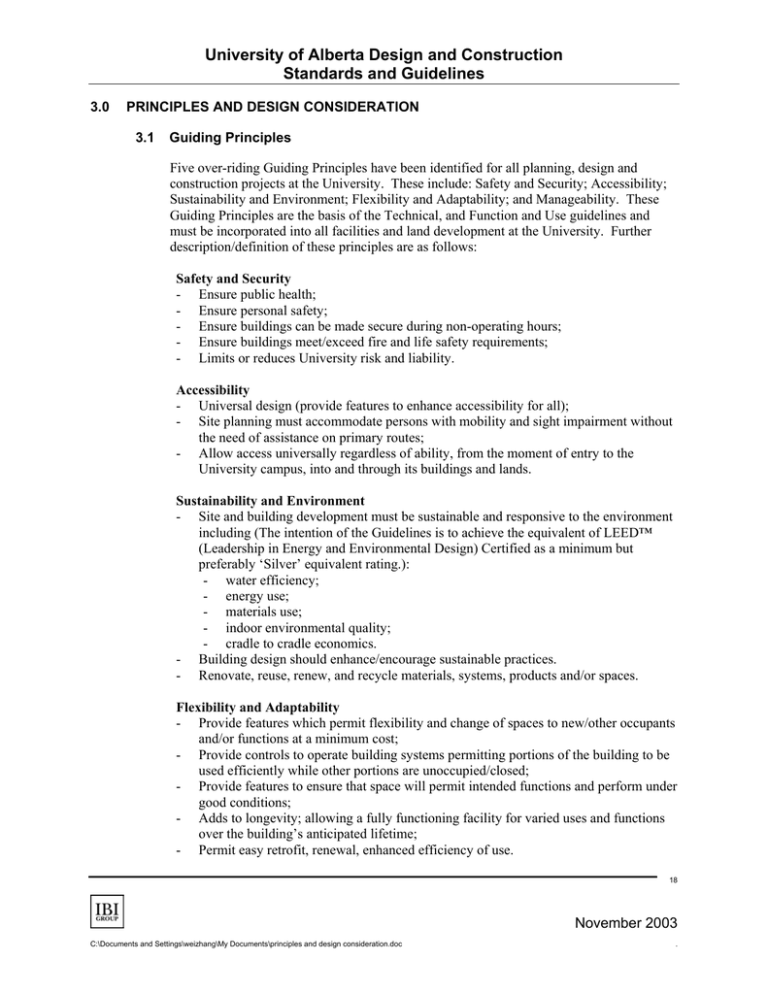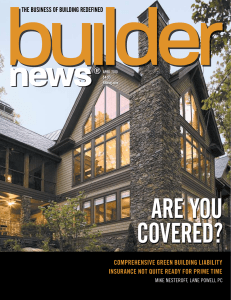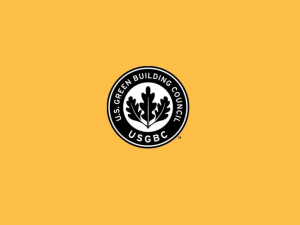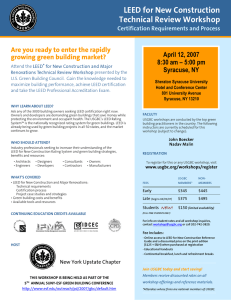Standards and Guidelines - Facilities and Operations
advertisement

University of Alberta Design and Construction Standards and Guidelines 3.0 PRINCIPLES AND DESIGN CONSIDERATION 3.1 Guiding Principles Five over-riding Guiding Principles have been identified for all planning, design and construction projects at the University. These include: Safety and Security; Accessibility; Sustainability and Environment; Flexibility and Adaptability; and Manageability. These Guiding Principles are the basis of the Technical, and Function and Use guidelines and must be incorporated into all facilities and land development at the University. Further description/definition of these principles are as follows: Safety and Security - Ensure public health; - Ensure personal safety; - Ensure buildings can be made secure during non-operating hours; - Ensure buildings meet/exceed fire and life safety requirements; - Limits or reduces University risk and liability. Accessibility - Universal design (provide features to enhance accessibility for all); - Site planning must accommodate persons with mobility and sight impairment without the need of assistance on primary routes; - Allow access universally regardless of ability, from the moment of entry to the University campus, into and through its buildings and lands. Sustainability and Environment - Site and building development must be sustainable and responsive to the environment including (The intention of the Guidelines is to achieve the equivalent of LEED™ (Leadership in Energy and Environmental Design) Certified as a minimum but preferably ‘Silver’ equivalent rating.): - water efficiency; - energy use; - materials use; - indoor environmental quality; - cradle to cradle economics. - Building design should enhance/encourage sustainable practices. - Renovate, reuse, renew, and recycle materials, systems, products and/or spaces. Flexibility and Adaptability - Provide features which permit flexibility and change of spaces to new/other occupants and/or functions at a minimum cost; - Provide controls to operate building systems permitting portions of the building to be used efficiently while other portions are unoccupied/closed; - Provide features to ensure that space will permit intended functions and perform under good conditions; - Adds to longevity; allowing a fully functioning facility for varied uses and functions over the building’s anticipated lifetime; - Permit easy retrofit, renewal, enhanced efficiency of use. 18 November 2003 C:\Documents and Settings\weizhang\My Documents\principles and design consideration.doc . University of Alberta Design and Construction Standards and Guidelines Manageability - Optimize life cycle costs while ensuring long life for building components and elements; - Provide design features to assist access to systems/equipment for routine maintenance, periodic repairs and replacement; - Provide a building envelope with a service life consistent with the planned building life; - Provide durable, easy to maintain material/finishes; - Ensure building design is compatible with University’s Utilities Infrastructure; - Ensure building system operates in accordance with design intent; - Provide controls to allow building system operation is within portions of the building while other are shutdown. 19 November 2003 C:\Documents and Settings\weizhang\My Documents\principles and design consideration.doc . University of Alberta Design and Construction Standards and Guidelines 3.2 General Design Considerations While it is acknowledged that all projects are unique and therefore require specific and individual attention, there are a number of generic design considerations, which typically apply to all or most projects. The following is not intended to be a total list but to expand on the Guiding Principles. These should be considered a starting point from which the specific project design evolves: .1 Building design should enhance function, a simple (yet elegant) design is preferred, shape of building should optimize length and height of perimeter walls and number of roof levels. .2 Design should consider flexibility to ensure variety of potential space uses. .3 Design to meet the present needs of the University and to recognize that future need changes should be achievable through adaptive reuse. .4 Design to achieve the program needs within the University’s budget. .5 Design using systems and equipment that can be maintained/modified during the project building/system life. Do not, where possible, use systems and equipment that are not supported by manufacturer/suppliers. .6 Innovations are encouraged but experimentation at the University’s expense must be avoided. .7 Technological change and advancements require consideration in design. .8 All University buildings are to be accessible in accordance with the University’s “Universal Design Guide”. .9 Design to consider low fire hazard, good resistance to misuse and vandalism, and good security against illegal entry. .10 Design facilities with energy conservation and occupant comfort in mind. .11 Consider using value analysis to undertake decisions considering longer term operation and maintenance implications. .12 All mechanical and electrical components require easy access for cleaning, servicing and replacement, with little or no disruption to users. .13 Use neutral colours for built-in fixtures, fittings and major surfaces. Consider accent colours for small surfaces and furniture such as upholstery. Evaluate colours and finishes based upon, timelessness, longevity, behavioural impact, cost and deterioration factors. 20 November 2003 C:\Documents and Settings\weizhang\My Documents\principles and design consideration.doc . University of Alberta Design and Construction Standards and Guidelines .14 Roofing and rooftop equipment should be designed for access by maintenance staff and for future replacement. .15 Exercise a preference for materials that demonstrate a greater degree of responsibility to the environment. .16 Use best practices for energy management. Consider passive systems, heat recovery, high efficiency lighting and harmonic correction. 21 November 2003 C:\Documents and Settings\weizhang\My Documents\principles and design consideration.doc . University of Alberta Design and Construction Standards and Guidelines 3.3 Sustainable Design The incorporation of the principles of Sustainable Design or Green Initiatives into the design process has become common practice. It is the intention of the University to embody the design intent of sustainable initiatives in all its design and construction projects, whether new construction or renovations. There are a number of different concepts that define green or sustainable building design. These concepts encompass a large scope of sustainable issues and principles. A definition of Sustainable Design can include broad brush concepts which incorporate all measures of sustainability to narrow definitions which focus on specific design elements such as percentage of recycled content in building materials or energy efficiency of mechanical and electrical systems installations. Sustainable Design, however as it is defined, must be applied in an effective and consistent manner throughout various project phases including design, contract document development, construction, facility turnover and life cycle operations. One approach of measuring sustainability is the US Green Building Council /Leadership in Energy and Environmental Design (USGBC/ LEED) process. Initiating the USGBC/LEEDTM process for implementation of Sustainable Design Initiatives is an effective and recognizable tool in achieving this goal. Not all projects at the University will be formally certified. The decision to proceed with LEED Certification is one that will be made by the University on a per project basis prior to design proceeding. Nonetheless, whether certified or not, all projects should endeavour to incorporate sustainable measures as identified by the LEED Rating System. 3.3.1 USGBC/LEED The US Green Building Council (USGBC) is the entity responsible for the development of a national consensus to produce a new generation of buildings that deliver high performance guidelines for the design, construction, and ongoing operation of the built facility environment. The Council and its standing members and committees work co-operatively to continue to develop industry standards, design practices, guidelines, policy positions and educational tools that support the adoption of Sustainable Design and Building Practices. The current rating system utilized by LEEDTM is Version 2.0, dated June 2001. This rating system establishes prerequisite and credit values to be assigned against a project to determine the certification level attempting to be achieved. The rating system has since been updated on an interim basis to Version 2.1 which was issued in November of 2002. Either version can be applied either solely or in combination on a project by project basis. It is the intent of the USGBC to update the current version being utilized by the design and construction industry and release Version 3.0 which is tentatively scheduled for June of 2004. Currently in development are LEED rating systems oriented to commercial interiors, existing buildings, core and shell, and multiple residential construction types. The appropriate rating system for the project should be selected. 22 November 2003 C:\Documents and Settings\weizhang\My Documents\principles and design consideration.doc . University of Alberta Design and Construction Standards and Guidelines The Canadian Green Building Council (CaGBC) has been recently organized based on the USGBC model. CaGBC has prepared a draft of LEED-Canada based closely on the USGBC LEEDTM Green Building Rating System v 2.1, currently in use. This document is currently under review by LEED. Once accepted, LEEDCanada will be document/process used by the University to determine sustainability. 3.3.2 LEED Certification Project Evaluation A thorough review by the University and the Design Team is required before arriving at a final decision to implement the LEEDTM rating system criteria. The project must be evaluated to ensure that design and construction practices being implemented significantly reduce or eliminate the negative impact of the project facility on the environment and its occupants in five broad categories. Those are outlined as follows: • • • • • Sustainable Site Planning; Safeguarding water and water efficiency; Energy efficiency and renewable energy; Conservation of materials and resources; Indoor environmental quality. The above categories must be considered and a preliminary outline for project implementation must be determined before the design process can proceed. A checklist is available for assigning credit values against these categories. A strong consensus amongst the project team must exist in order for this process to be successful. Any of the initiatives or categories identified above cannot be fully implemented without the combined efforts of the University and the Design Team regardless of the project implementation process utilized. The next stage is to initiate a preliminary review of applicable LEEDTM categories to determine the initial certification level to be achieved applying the initial principles of Sustainable Design against the project program. The LEEDTM Rating System (Version 2.1) employs a whole building approach and encourages and guides the project team through a collaborative integrated design and construction implementation process at the same time endeavours to optimize environmental and economic cost factors. 23 November 2003 C:\Documents and Settings\weizhang\My Documents\principles and design consideration.doc . University of Alberta Design and Construction Standards and Guidelines The four levels of certification are outlined as follows: • • • • LEEDTM Certified – 26 – 32 points; LEEDTM Silver Level – 33 – 38 points; LEEDTM Gold Level – 39 – 51 points; LEEDTM Platinum Level – 52 – 69 point. Where possible the University projects are intended to achieve LEED certified, but preferably LEED Silver. Project Registration Once it has been determined that the project will be designed and constructed to adhere to the Sustainable Design and Rating System criteria outlined by LEEDTM, registration of the project should proceed. This can be implemented through the Council’s website at www.leedbuilding.org. A copy of the USGBC reference package (Version 2.0, dated June 2001)) and the Green Building Rating System (Version 2.1, dated November 2002) should be obtained. This documents will provide the Design Team with the parameters required for obtaining certification through USGBC/LEEDTM. The reference guide provides the Design Team with the rating system criteria as well as calculator and USGBC templates required for assembling certification data through the design and construction phases of the project. Credit Interpretation Rulings (CIR’s) are also provided which allow the Design Team to obtain responses to proprietary questions which have been submitted by other design teams attempting to initiate the LEEDTM process, by implementing design solutions that do not meet the defined intent of the current credit documentation. Access to all of this reference material provides the design team with a comprehensive design and technical database. Contract Document Development A final USGBC/LEEDTM v 2.1 checklist should be calculated at the completion of design development. This checklist should be the basis of implementation through the development of Contract Documents, final Bid/Award, and Construction. The checklist is broken into three categories, identifying whether the credit values are being achieved, not being achieved, or may be initiated following further review during the development of Contract Documents. These remain as potential credits and are evaluated on a periodic basis during the development of Contract Documents. Cost effectiveness or sequencing of construction may be decisions that result in these indefinitive credits being implemented into the final program or deleted. It is important that the checklist be reviewed periodically and updated to reflect the current status of Contract Document development. 24 November 2003 C:\Documents and Settings\weizhang\My Documents\principles and design consideration.doc . University of Alberta Design and Construction Standards and Guidelines The development of a comprehensive set of Contract General Requirements through the development of Division 1 sections in the Specifications is required during the development of Contract Documents. It is imperative that the Design Team clearly understand the intent of implementing Sustainable Design initiatives through USGBC/ LEEDTM. General Requirements sections that should be considered during the development of Contract Documents are as follows: • • • • • LEEDTM Certification – Section 01015 LEEDTM Certification Procedures – Section 01350 Project Waste Management – Section 01560 Project Commissioning – Section 01810 Contractor Commissioning and Testing Requirements – Section 01820. The above technical sections, to be read in conjunction with the working drawings, will identify to the Contracting Team the process of initiating Sustainable Design and the responsibilities of the construction team in this implementation process. It is strongly recommended that a series of pre-bid and pre-construction conferences be held with the bidding, Subcontractors, and Product Suppliers, to ensure that the intent of the contract documents is clearly understood by all parties involved on the project. A co-operative effort is required amongst the Design Team, including the construction team, in achieving the desired goal of Level Certification through USGBC/LEEDTM. It is also advantageous that a series of standard templates for various implementation requirements be incorporated into the applicable technical sections of the Contract Document so that the applicable Subcontractors understand the intent applicable to the individual scopes of work. Cross-referencing to other scopes of work should also be identified at this level so that the applicable coordinating trades comprehend the intent of implementing a particular credit indicative and the co-ordination required during the construction process to achieve those credit values. Education is key to the success of implementing the LEEDTM process. It should be understood that this rating system is relatively new to the construction industry as a whole throughout North America and particularly in the Western Canadian Marketplace. It should be anticipated that a learning curve process will be required during initial projects that implement LEEDTM to provide designers, constructors, manufactures, and suppliers of products to understand the intent of this process and to adjust their business practices to suit the requirements of initiating this Sustainable Design process. LEEDTM Project Verification A significant level of submittal documentation is required by all levels of the project/design and construction teams. These are clearly outlined in the rating system criteria for all five technical categories. As previously mentioned in the 25 November 2003 C:\Documents and Settings\weizhang\My Documents\principles and design consideration.doc . University of Alberta Design and Construction Standards and Guidelines category above, it is essential that appendices located in the General Requirements of the Contract Documents indicate areas of responsibility for the delivery of the submittal requirements. Development of a submittal matrix of responsibility by various members of the Design Team should be included in this documentation. An ongoing review of the responsibility matrix as well as the checklist through the construction program must be undertaken to ensure that submittal requirements are being provided on an “as required” basis. In several instances providing documentation ‘after the fact’ may disqualify a credit category from being achieved. Supplementary templates incorporated into various technical sections throughout the Contract Document will also outline submittal requirements by subcontractors, manufacturers and suppliers during the initial phases of the construction program. It is imperative to the project calculation and accredited evaluations for categories such as materials and resources, recycled content, and local/regional material use be provided at the initial stages of project development. Since these credit categories are based on percentage values of the overall project’s construction cost, definition of the values being obtained at the initial stages of construction are required to determine whether or not the credited values are indeed being met. Measurement and testing submittals are required on a number of categories outlined in Energy and Atmosphere and Indoor Environmental Quality, two of the technical categories under the LEEDTM Rating System. These require detailed calculation by the Consulting Engineers of Record and the Contractors involved in the implementation of these credit values. HVAC systems involve dynamic airflows and verification of onsite installation and system performance following the installation and start-up phases of construction and through the commissioning process to ensure that energy performance and energy efficiency values incorporated into the design are being met. 26 November 2003 C:\Documents and Settings\weizhang\My Documents\principles and design consideration.doc . University of Alberta Design and Construction Standards and Guidelines Commissioning Instituting comprehensive commissioning procedures during the course of the overall project development is essential in obtaining the required verification of dynamic performance of systems and the operational efficiencies achieved. The implementation of commissioning and testing procedures both during the design development phase and during construction and closeout procedures are paramount in achieving credit values assessed against Energy and Atmosphere credits as well as verification of Indoor Environmental Quality. Ongoing measurement and testing during the operational cycle of the building is also required in obtaining value for LEEDTM credit assessments. This ensures that the facility and its integrated energy efficient systems are maintained at the highest level to ensure ongoing energy efficient performance. Part of the LEEDTM requirements is to have not only a commissioning component for the construction phase, but an Advanced Commissioning requirement which includes input at Schematic Design and prior to completion of contract documents. This provides a higher degree of review by competent commissioning managers which will ensure the design intent is carried through to construction completion. As it is desired to have 3rd party commissioning, the process should be lead by the University PM, and their 3rd party commissioning manager. LEEDTM Project Certification At substantial performance of the project, the various submittals provided during the course of design and construction relevant to assessed credit categories under the LEEDTM Rating System, are assembled in a comprehensive document to be forwarded to the USGBC for consideration of LEEDTM certification in the identified level category to be achieved. The documentation is submitted at this stage for review and verification by the LEEDTM Certification Committee. Review of the submitted documentation and follow-up site verification are part of the overall certification process. During this review a dialogue will be established between the Design Team and the LEEDTM Certification Review Panel to verify documentation submissions. Subsequent or supplemental information may be requested during this Certification Review Process to verify credit values achieved through the various technical categories. At this particular point in time, Innovation and Design credits may be applied as part of the submission documentation. These atypical Sustainable Design initiates do not fall under specific categories identified under the LEEDTM Rating System, but can be applied for consideration by the LEEDTM Certification Committee for consideration of credit value and application. 27 November 2003 C:\Documents and Settings\weizhang\My Documents\principles and design consideration.doc . University of Alberta Design and Construction Standards and Guidelines The review and certification process will result in a final point-scoring tally for the project, which will result in the certification designation of the project. At this stage a presentation of a LEEDTM Certification plaque is provided to the University to display at the project site. From this point forward the facility can be identified as LEEDTM Certified conforming to the Sustainable Design Rating System criteria established by USGBC/LEEDTM. 3.3.3 Conclusion Implementation of Sustainable Design through the USGBC/LEEDTM process is extensive and requires a significant commitment of time and effort by the University, the Design and Contracting Teams and operations teams involved in the life cycle of a project. The rewards of implementing this process are substantial. Not only does the University receive a facility with a built environment conducive to a more positive and productive work environment for the occupant but also a facility that is energy efficient and sensitive to the environment in which it is constructed. The end result is the completion of a rewarding and successful project of which all those involved can take pride of Ownership. 28 November 2003 C:\Documents and Settings\weizhang\My Documents\principles and design consideration.doc . University of Alberta Design and Construction Standards and Guidelines 3.4 Prohibited Items Design elements and construction features may be prohibited within the Guidelines because of concern and experience over longer term durability and/or performance. Prohibited items are identified throughout Section 4.0 “Technical Guidelines” and Section 5.0 “Function and Use”. In special cases prohibited elements and features may be accepted if a special case can be made for their inclusion. Requests for acceptance of prohibited items would be dealt with as outlined in Section 1.5 Standards and Guideline Exemptions. 29 November 2003 C:\Documents and Settings\weizhang\My Documents\principles and design consideration.doc . University of Alberta Design and Construction Standards and Guidelines 3.5 Building Life Expectancy The University is a long term owner/operator of their building infrastructure. The building life expectancy should reflect this long term commitment within the context of the building/facilities program and the Edmonton climate extremes. All buildings shall be designed for a building life expectancy as follows: - 100 years for the structure and inaccessible components; 50 years for the building envelope, except roofing; 25 years for shingle or membrane roofing (metal roofing should provide a 100 year life expectance); 25 years for interior components, and design to allow change; 30 years for mechanical systems (without major upgrade or replacement); 30 years for electrical systems; finishes shall be selected that require minimum maintenance. Additions will be designed with a life expectancy equal to the expected life of the building receiving the addition. Major interior renovations will be designed for a life expectancy of 20 years. 30 November 2003 C:\Documents and Settings\weizhang\My Documents\principles and design consideration.doc . University of Alberta Design and Construction Standards and Guidelines 3.6 Heritage Constraints The University has a number of historically and architecturally significant sites and buildings that are worthy of retention. Each building and its heritage character will be individually reviewed on its own merits. The Consultants should make themselves aware of heritage constraints to prepare alternate solutions for repairs/replacement in older University buildings. Generally the distinctive heritage elements and character should be preserved and enhanced. Refer to Section 5.12. 31 November 2003 C:\Documents and Settings\weizhang\My Documents\principles and design consideration.doc .


